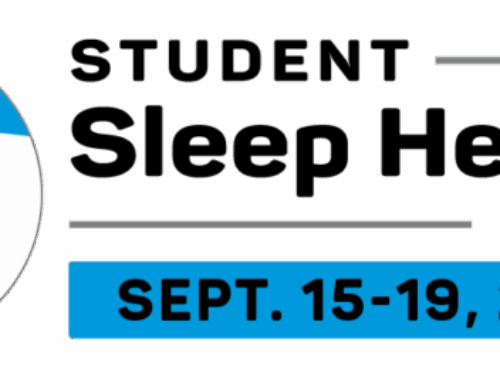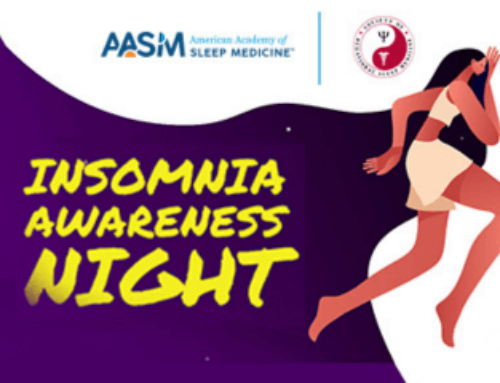Westchester, Ill. — A study in the May 1 issue of the journal SLEEP shows that adolescents with a childhood diagnosis of Attention Deficit/Hyperactivity Disorder (ADHD) are more likely to have current and lifetime sleep problems and disorders, regardless of the severity of current ADHD symptoms. Authors suggest that findings indicate that mental health professionals should screen for sleep problems and psychiatric comorbidities among all adolescents with a childhood diagnosis of ADHD.
Results indicate that adolescents with a childhood diagnosis of ADHD, regardless of persistent ADHD, were more likely to have current sleep problems and sleep disorders such as insomnia, sleep terrors, nightmares, bruxism and snoring. Of the total sample, 17 percent of children with ADHD were currently suffering from primary insomnia, versus 7 percent of controls; lifetime primary insomnia occurred in 20 percent of children with ADHD, compared to 10 percent of controls. Nightmare disorder affected 11 percent of children with ADHD, and lifetime nightmare disorder affected 23 percent, versus 5 and 16 percent of controls. The presence of at least one psychiatric comorbid condition increases the risks for insomnia and nightmares.
According to principal investigator Susan Shur-Fen Gau, MD, PhD, associate professor at the College of Medicine and Public Health, National Taiwan University, symptoms and consequences of ADHD and sleep problems in children often overlap. Some primary sleep disorders are found to be associated with inattention, hyperactivity, behavioral problems and impaired academic performance, which are often mistaken for symptoms of ADHD.
“In some patients with ADHD, symptoms are caused or exaggerated by primary sleep disorders, and therefore treatment of the sleep disorder will improve ADHD symptoms,” said Gau.
Data were collected from 281 consecutive patients (86.2 percent male) between the ages of 10 to 17 years who had been diagnosed with ADHD according to DSM-IV criteria at a mean age of 6.7 years, and 185 controls who did not have ADHD as a child or teen. Diagnosis of ADHD was made based on information obtained from parent and child interviews, observation of the child’s behaviors, and rating scales reported by parents and teachers.
Findings of the study indicated that the rates of nightmare and lifetime nightmare disorder were more prevalent in girls and snoring was more prevalent in boys. Snoring may be more prevalent in boys due to an increased rate of sleep-disordered breathing in boys. Mothers were found to be more aware of symptoms related to ADHD in the presence of primary insomnia, sleep terror disorder or sleepwalking disorder, whereas teachers may be more sensitive to ADHD symptoms in the presence of primary hypersomnia and nightmare disorder.
According to the study, sleep problems in children with ADHD may be caused by a variety of factors, including internet addiction, hyperactivity, use of stimulants and the presence of other psychiatric disorders. Authors of the study state that the etiology of sleep problems and disorders need to be identified in children with ADHD, in order to create a modified treatment regime for sleep disorders and ADHD symptoms.
SLEEP is the official journal of the Associated Professional Sleep Societies, LLC (APSS), a joint venture of the American Academy of Sleep Medicine and the Sleep Research Society.The APSS publishes original findings in areas pertaining to sleep and circadian rhythms. SLEEP, a peer-reviewed scientific and medical journal, publishes 12 regular issues and 1 issue comprised of the abstracts presented at the SLEEP Meeting of the APSS.
For a copy of the study, “Sleep Problems and Disorders among Adolescents with Persistent and Subthreshold Attention-deficit/Hyperactivity Disorders,” or to arrange an interview with the study’s author, please contact Kelly Wagner, AASM public relations coordinator, at (708) 492-0930, ext. 9331, or kwagner@aasm.org.
AASM is a professional membership organization dedicated to the advancement of sleep medicine and sleep-related research. As the national accrediting body for sleep disorders centers and laboratories for sleep related breathing disorders, the AASM promotes the highest standards of patient care. The organization serves its members and advances the field of sleep health care by setting the clinical standards for the field of sleep medicine, advocating for recognition, diagnosis and treatment of sleep disorders, educating professionals dedicated to providing optimal sleep health care and fostering the development and application of scientific knowledge.
###




